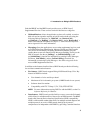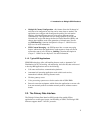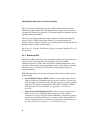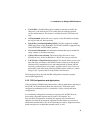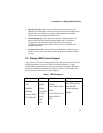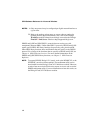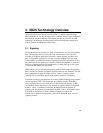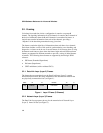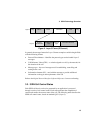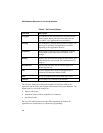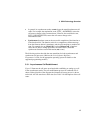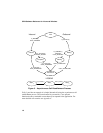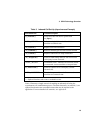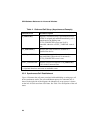
13
3. ISDN Technology Overview
The Integrated Services Digital Network (ISDN) is a digital communications
network capable of carrying all forms (voice, computer, and facsimile) of digitized
data between switched endpoints. This chapter provides an overview of ISDN
technology, including the signaling method used to transmit data, framing and
framing formats, and ISDN call control states.
3.1. Signaling
The digital data stream contains two kinds of information: user data and signaling
data. The signaling data is used to control the transmission of user data. For
example, in telephony applications user data is usually digitally encoded voice
data; in file transfer applications, user data is packets of High-level Data Link
Control (HDLC) encoded information. Signaling data carries information such as
the current state of the channel (for example, whether the telephone is on-hook or
off-hook). Signaling data can also indicate who is calling, the type of call (voice
or data), and the number that was dialed.
ISDN protocols use an out-of-band signaling method, which means the signaling
data is carried on a channel or channels separate from user data channels. The user
data is transmitted in eight bit samples on B or "bearer" channels, and the
signaling data is transmitted outside of the eight bit sample on D channels.
In addition to carrying signaling data out-of-band, ISDN technology uses common
channel signaling (CCS). This means that one signaling channel (D channel)
carries signaling data for more than one user data channel (B channel). In BRI,
two channels of user data for every one channel of signaling data are transmitted.
In PRI T-1 lines, 23 channels of user data (B channels) and one channel of
signaling data (D channels) are transmitted. In PRI E-1 lines, 30 B channels and 1
D channel are transmitted. Common channel signaling also allows the
transmission of additional information, such as ANI and DNIS digits, over the
signaling channel.



